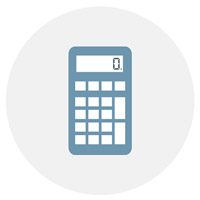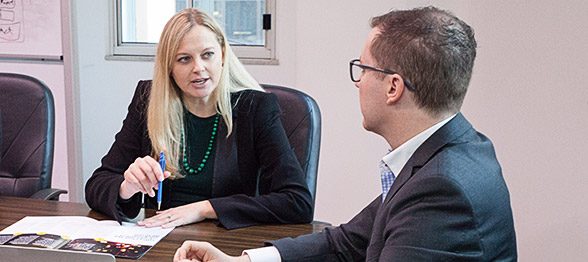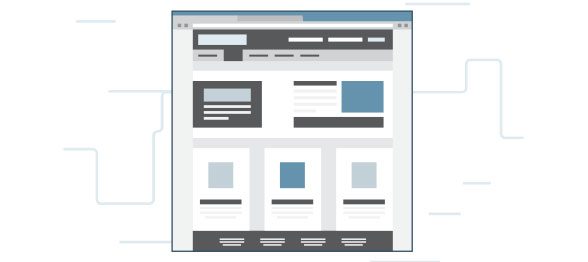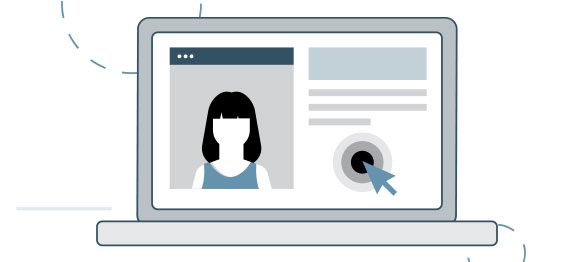The real question is what is the cost of a site that isn't usable
- Read time: 3 mins
- Tech level: low
- Key point: the cost of usability can be seen as a high return investment
- Online tool: go straight to an online UX calculator.

User experience and usability are hot topics in web design. The terms refer to enhancing user satisfaction by making a site easier to use, faster to navigate and more simple to interact with. You may wonder how much usability costs, but the real question is what is the cost of a site that isn’t usable.
The cost of lost visitors
You can quantify the value of lost traffic by looking at the lifetime value of a customer. Assume that your average customer spends $250 to $375 per year with your company. If the average life span of your customer relationship is 5 years, then for every person that leaves your site due to poor user experience you lose $1,250 - $1,875. Multiply that by your bounce rate and it is clear to see that bad user experience is costly.
In addition, Google uses time on site, page views and bounce rate in its ranking algorithm. A site that is user-friendly has a low bounce rate and high time on site with numerous page views. Google rewards usable sites with even more traffic. The converse is true for a site with poor usability.
The cost of not having a consistently user-friendly website

Your bottom line is impacted by the way your customers experience your website across devices and situations. Your website visitors, or potential customers, are on the go and they take their internet with them. Mobile devices (phone, tablet or phablet) account for 2 of every 3 minutes on-line these days. Mobile is overtaking the desktop.
- 13% of adults use mobile devices exclusively to access the internet
- 46% of consumers shop exclusively on smartphones
- 40% will skip the first search result if it isn’t mobile friendly
If your potential customers don’t consider the experience of your website consistently user-friendly across multiple channels and devices, then this will have a number of negative flow on effects to your brand, customer loyalty and very likely your bottom line. On the other hand, if you website consistently user-friendly across multiple devices and situations - the rewards are tremendous. Over 60% of companies that designed their websites with mobile devices in mind recognised an increase in sales.
The cost of slow loading
There’s a very good chance that your website visitors expect a fast loading website. Consumers know what they need and how to find it and they want it fast. They won’t wait around for a slow loading website – any why should they? In the digital age – your website visitors are spoilt for choice and your competition is just a few clicks away.
Consider these statistics on page loading:
- 40% of people abandon a site that takes more than 3 seconds to load
- 47% of desktop users expect a page to load in 2 second or less
- 39% abandon if images load slowly
Once your page loads, website visitors form an opinion almost instantaneously. You have roughly 5 seconds to grab the user’s attention or lose them forever. Put simply, if your website visitor isn’t satisfied quickly and if they don’t find your website easy to navigate, then your website isn’t considered usable and your potential customers will bounce away. Speed is especially important for people using mobile devices because these devices don’t always have access to fast internet.
Making a site usable

A website that is built for your consumers will boost your conversions.
To recapture this lost business, you must improve the usability of your website. Increasing usability starts with understanding the visitor. By developing personas you can identify the main characteristics of the target visitors. See an example of a persona. With these personas in mind you can then tailor your websites navigation to suit your ideal visitors. This blueprint (called a wireframe) can then be tested on people to gauge it’s true usability. Based on feedback and A/B testing, the wireframe is refined and only then is the site redeveloped. Improving site usability can include all of these steps or you can begin incrementally by simply improving navigation, load times, and responsiveness.
Comparing the costs
So, let’s compare the cost of poor usability to the cost of making a site user-friendly.
If the lifetime value of a customer is $1875 and a site gets 200 visitors a day with a bounce rate of 45% that represents a potential loss of $168,750 each day. If the same site is completely redesigned with usability in mind and the bounce rate falls to 30% then you’ve cut loss due to bounce to $112,500. That’s a decrease in potential loss of an astonishing 33% by just reducing the bounce by 15%. In addition, Google will reward the site by increasing its page rank on the search engine results. This may turn 200 visitors a day to 350 visitors or more per day.  Depending on the work involved, the cost for usability improvements could be less than $9,000.
Depending on the work involved, the cost for usability improvements could be less than $9,000.
You can estimate the amount to improve usability using this handy usability cost calculator.
Learn more about Usability
See how usability can improve your website and case studies of previous projects.







